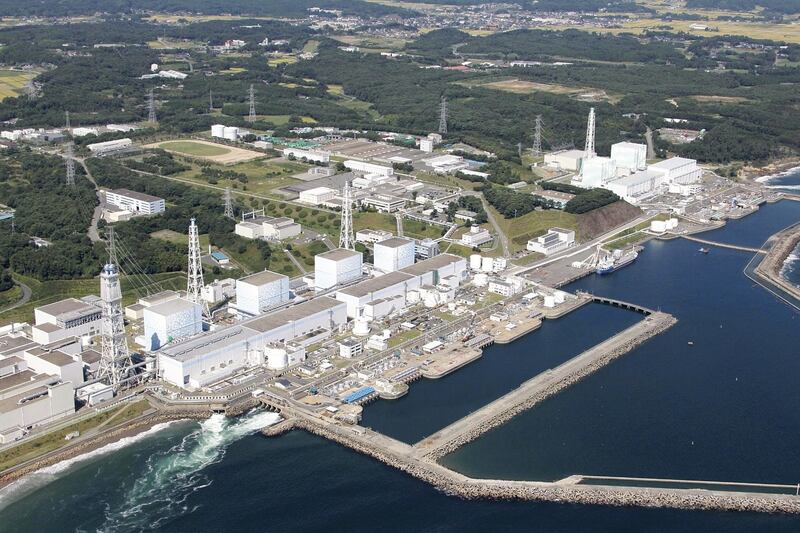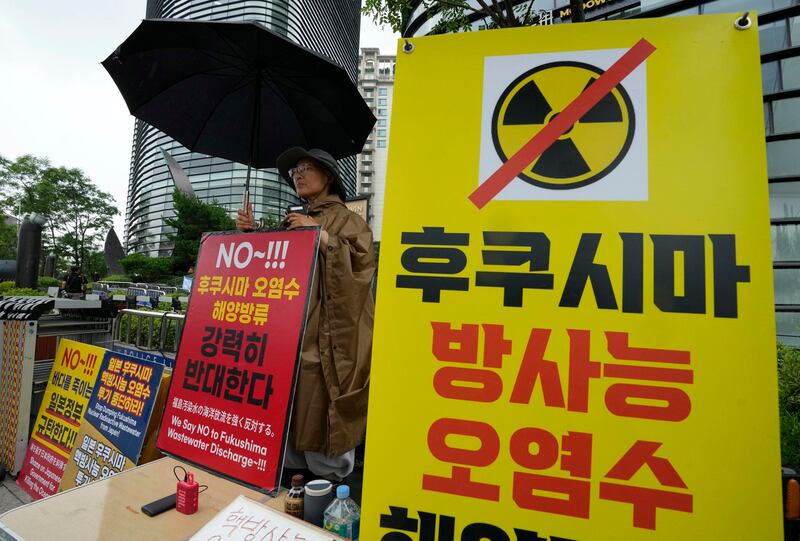Japan’s plans to discharge treated nuclear wastewater stored at the Fukushima Daiichi power station into the Pacific Ocean are consistent with relevant international safety standards, the safety review by the U.N.’s atomic watchdog has concluded.
The discharges of the treated water would have a negligible radiological impact on people and the environment, said the report formally presented by International Atomic Energy Agency (IAEA) Director General Rafael Mariano Grossi to Japanese Prime Minister Fumio Kishida in Tokyo on Tuesday.
“Japan will continue to provide explanations to the Japanese people and to the international community in a sincere manner based on scientific evidence and with a high level of transparency,” Kishida said as he met with Grossi.
TEPCO, the Tokyo Electric Power Company, which operates the Fukushima nuclear power plant located on Hakura Beach in Japan, is set to initiate the release of approximately 400,000 cubic meters of treated wastewater from the plant into the Pacific this summer.
Over 1.3 million cubic meters of wastewater - enough to fill more than 500 Olympic-size swimming pools - is currently contained in numerous water storage tanks at the facility. It was used to cool the nuclear reactors damaged in a 2011 earthquake and tsunami.

TEPCO says that the controlled discharge of the treated wastewater adheres to a meticulous nuclear purification process utilizing a pumping and filtration system called ALPS (Advanced Liquid Processing System), designed according to the safety standards prescribed by the IAEA.
In the report’s foreword, Grossi said that the “controlled, gradual discharges of the treated water to the sea, as currently planned and assessed by TEPCO, would have a negligible radiological impact on people and the environment.”
China strongly objects
The plan, conceived in 2021, has been a source of concern about possible environmental and health risks for nearby countries such as South Korea, China and Pacific Island nations. Local Japanese fishing unions have also opposed it.
The Chinese Embassy in Japan said Tuesday the IAEA's report could not be a pass for the nuclear-contaminated water to be released. It called on Japan to immediately suspend the plan, seriously negotiate with the international community, and jointly explore scientific, safe, transparent and acceptable handling methods.
In a press conference, Ambassador Wu Jianghao claimed that there was no precedent for discharging such water produced by nuclear accidents into the sea. He said it was different from other countries discharging wastewater because “what they are discharging is cooling water, not polluted water that has been in contact with the molten core of the accident.”
Fukushima’s nuclear-polluted water contains more than 60 types of radionuclides, many of which have no effective treatment technology at this stage, Wu said, claiming the effectiveness and sustainability of the Japanese processing system lacks sufficient authoritative verification.
However, IAEA and Japanese officials have said that ALPS will reduce 62 of the 63 radioactive substances currently in the wastewater to amounts that will have a negligible environmental impact.
Wu said that Japan does not respect science because it announced in 2021 that it would start releasing the wastewater, “long before the IAEA completed its assessment and released its final report.”
He also said IAEA is “not an appropriate agency to assess the long-term impact of nuclear-contaminated water on the marine environment and biological health.”
IAEA will monitor the discharge
The decision has also divided the scientific community. However, the IAEA's report aligns with many international independent scientists who say the worries are based on misinformation.
The wastewater release will take between 30 and 40 years to complete. The IAEA said it would continue its safety review during the discharge phase, with a continuous on-site presence and live online monitoring from the facility.
The agency said the stored water has been treated through ALPS to remove almost all radioactivity, aside from tritium, which will be diluted with the water to bring it below regulatory standards before the release.

“The IAEA will continue to provide transparency to the international community, making it possible for all stakeholders to rely on verified fact and science to inform their understanding of this matter throughout the process,” Grossi said.
He plans to arrive at the Fukushima plant on Wednesday. The following day he heads to South Korea to explain the report’s findings.He is also expected to visit some Pacific Island countries to ease their concerns over the plan.
The report represents the culmination of nearly two years of effort by a specialized task force comprising leading experts from the agency, guided by internationally acclaimed nuclear safety advisors from eleven nations.
The experts assessed Japan’s proposals in light of the IAEA Safety Standards, which are recognized as the benchmark for safeguarding individuals and the environment and promoting a consistent and elevated level of safety globally.
Edited by Mike Firn.
